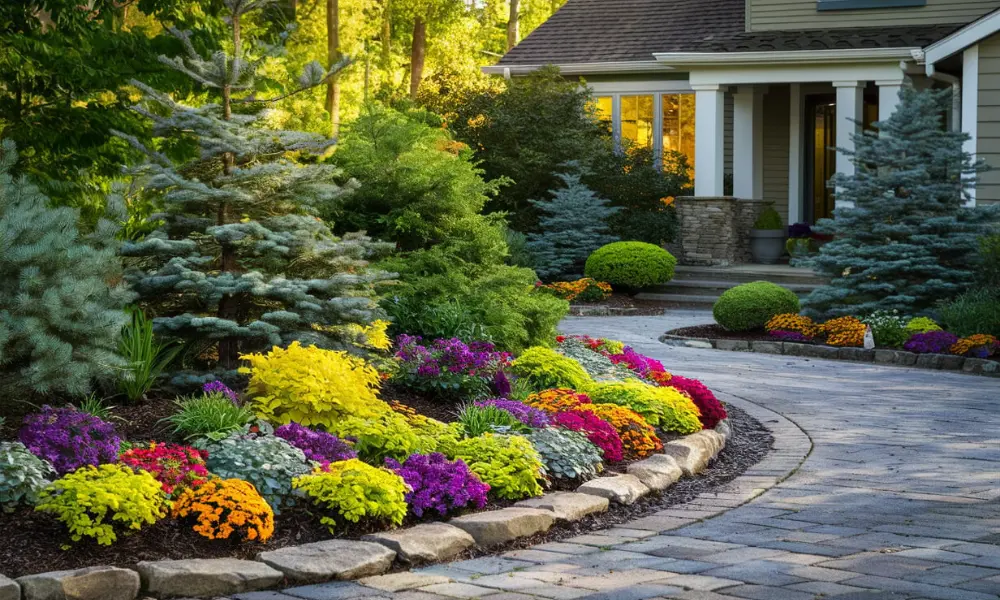Introduction
Colour is among the first things you think about when you want to renovate your home. The colours you use can influence the mood, shape the atmosphere, and even the way you feel in the space that you are in. Rather than selecting colours randomly based on a random catalogue, why not get inspired by something already natural and beautiful—flowers?
Flowers produce some of the best palettes. They can have a cool touch of blues or a vibrant look in the form of yellows, which can be carried into your interior at home. The colour choices you use to inspire other choices in how you renovate your home are inspired by flowers. I will show you how to use flower colours to create a mindful, harmonious, and vibrant palette in this blog.
Learning About the Psychology of Colours
Firstly, it is beneficial to get to know a bit about the psychology of colours, which is that colours influence your mood. An example is that blue is usually associated with calmness, yellow with happiness, and green with balance and freshness. That is why the tones of hospitals are soothing, and cafes tend to be associated with warm colours.
Nature has already achieved this emotional connection with flowers in their natural form. You can picture the bright red of roses, which are the colour of passion, or the light lavender, which is the colour of relaxation. When you follow the clues given by flowers, you are not merely picking flowers of a pretty colour; you are also utilising the emotions that the specific colour induces in a person.
Discussion of Various Palettes of Flower Colours
The colours of different flowers each have a different personality. Roses are typically attributed to reds and pinks, which are ideal for warmth and romance. Sunflowers are very cheerful and radiate bright yellows, which immediately make a place cheerful. Lavender exudes relaxing purples, which are effective in bedrooms. Hydrangeas have a variety of blues and pinks that can be used in any room.
Examining these palettes of florals, you can begin to create colour combinations that seem well thought out and deliberate.
Choosing a Dominant colour
Each room has to have a primary colour, and that is the one that forms the base. This is a colour that is mostly from your favourite flower. For example, a warm red/pink would be your anchor colour in case you are fond of roses. Everything can be branched out from there. Use a dominant colour, and your space will not look chaotic.
Assembling a Complementary Palette
After having your primary shade, you are ready to complement it with some other colour schemes. The yellow shade inspired by a sunflower may appear gorgeous with warm creams or natural greens. The cool greys or whites are good combinations with lilac purples. These supporting colours are harmonising colours that ensure that your room is not overwhelming or flat.
Taking Seasonal Flowers Into Account
Seasons can also give you ideas for your palette. Spring blossoms are inclined to tender pastels—like blush pinks and mint greens. Summer flowers are full of colour and sparkle with hot pinks, oranges, and bright blues. Fall flowers tend to be earthy in colour, like burnt orange or deep red. And winter? You will find subdued but deep colours such as burgundy, pine green, or ice blue.
Seasonal colouring of your house will make it seem eternal while also capturing the natural flow of time throughout the year.
Real-Life Uses of Flower-Based Palettes
But what is the best way to incorporate these palettes into your renovation? Breaking it down room by room:
- Living Room: It is possible to make this place welcoming to guests with warm, floral colours.
- Kitchen: Bubbles of vibrant colour accents, such as sunflower yellow or leafy green, make it bright.
- Bedroom: Lighter colours such as lavender or pastel blues of hydrangea can be used to create a relaxing and peaceful escape.
- Bathroom: New colours such as aqua or soft pink give a refreshing effect.
Use of Textiles
One of the simplest methods of bringing flower-based colours into your home is through textiles. Curtains, cushions, and rugs allow you to fool around with palettes without significant investment. You will be able to replace them with the season of your liking.
Accent Walls and Decorative Features
To be bolder, you may opt to have an accent wall in your primary floral colour. These colours can also carry through to decorative elements such as artwork, vases, or even tile backslashes. The secret lies in the balance—using some stronger colours with softer ones so the room doesn’t feel too heavy.
Instruments for Making Palettes Inspired by Flowers
The good thing is that you do not need to feel your way through this. Digital tools and apps are numerous and can assist you in creating palettes. Colour palette generators enable you to take a picture of a flower that you love and drag the colours out of it. Others even allow you to see what those colours would look like inside a room before you make the commitment.
For inspiration from real seasonal and local blooms, you can learn more here and see examples to help create your flower-inspired palettes.
Conclusion
Flowers do not just provide visual pleasure, but they also provide ready-made palettes with emotional, warm, and balancing qualities. With the selection of dominant colours, the creation of complementary tones, and the use of seasonal flowers, you can turn your renovation into something natural and yet unique.
Therefore, the next time you are in a dilemma when choosing colours, refer to your favourite flower. It is more than likely that the ideal palette is already growing right in front of you.

